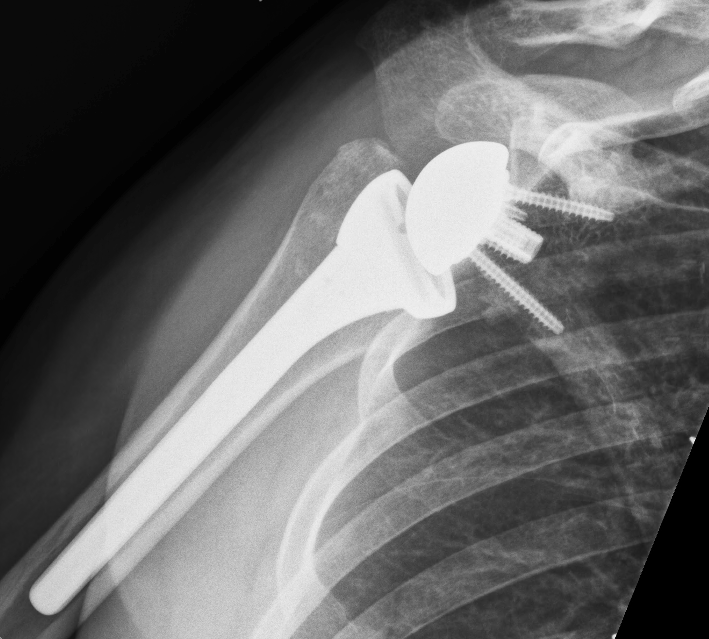A reverse total shoulder replacement may be considered in patients suffering severe joint arthritis with irrepairable rotator cuff tears or patients with a deficient rotator cuff suffering superior migration of the humeral head. Another consideration for a reverse total shoulder replacement may include malunion of a proximal humeral fracture or an irrepairable proximal humeral fracture.
The prosthesis used in a reverse total shoulder replacement is similar to a total shoulder replacement, however the prosthesis is reversed. Instead of the ball on the end of your humerus a socket is placed and instead of the socket on your shoulder blade (glenoid) a ball, or glenosphere, is placed. Hence the socket and the ball are reversed.
If there is a severe weakness of external rotation of the arm or complete irrepairable tears of the rotator cuff, a latissimus dorsi transfer may be used to improve the external rotation. This involves transferring the latissimus dorsi to act as an external rotator, rather than an internal rotator of the humerus. This provides stronger support and stability for the new prosthesis and a greater active range of motion.
At day one postoperatively an xray and CT scan
will be performed to check the position of the prosthesis and physiotherapy will commence. Patients will be in a sling for up to 6 weeks following surgery. The exact time in the sling is determined by the specific details of the surgery. Many patients are only in a sling for a few weeks postop.
A postop review with Dr Cutbush will be organised at 6 weeks postop. Usually patients are reviewed at 6 weeks, 12 weeks, 6 months and 12 months postop. Final check scans are performed at 12 months postop.
I use the following prostheses in most instances:
Wright, Tornier Ascend Flex
Zimmer Biomet Comprehensive
These prostheses have established track records in the
Australian Shoulder Registry. With excellent performance in terms of longevity.


